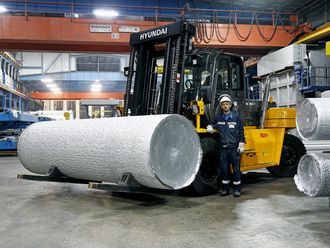
A steady increase in the number of end-users buying property – that has been one of the most notable recent trends in the Dubai real estate market. This has also been a key driver behind the growth in sales transactions, especially in the sub-Dh5 million bracket.
Where are the majority of these buyers coming from? In my view, this is an internal shift and not an external one. Dubai’s population has been growing steadily without a doubt and there are plenty of international investors eyeing up the market, but most of the new end-users fall into two distinct camps – landlords and tenants.
Changing equation for landlords
With rental prices and sales prices increasing side by side, landlords are finding themselves in a complex position. There are some landlords who own investment properties and live in rental homes – they have enjoyed a good ride over the past 2 years as they were locked into good rental rates post-Covid.
They were able to use rental income to supplement their own rent payments, and possibly to help pay off the mortgage on their investment. Now that rents have shrugged off those ‘Covid discounts’, landlords are seeing more sense in moving into the property they own and making that their primary residence. Consequently, a 12-month notice is sent to the existing tenant and that property goes off the rental market.
The other option, depending on their exact financial situation, would be to cut their losses and just sell the property. A lot of homeowners in the current market wouldn’t really be inclined to sell unless they were in a serious pinch. Thus they would either move in, or try to negotiate a higher renewal rent with their tenants.
Changing equation for tenants
Rental prices across Dubai have risen 20 per cent year-on-year and are at their highest levels in recent memory. However, individual income hasn’t risen at the same pace, which presents a potentially sticky situation for tenants.
If they want to relocate and seek a new rental, they are at the mercy of the market – anyone who wants to rent a villa in Dubai Hills, for example, will be paying almost 60 per cent more than what they would have been last year.
There is a tug of war between location and pricing that is getting quite intense. If a tenant wants to stay in Dubai Hills and pay a comparable rate to what they were paying before, then they might need to downsize from a villa to an apartment.
Or else they may need to consider moving further out to get a similar type of property – Damac Hills 2 has become a popular choice for villa tenants, at the expense of adding 15 kilometers to their commute. The fact is, tenants are having to make compromises to maintain either lifestyle or rental price.
A lot of these decisions are having to be fast-tracked as a result of eviction notices being served. The shift in landlord behavior has a direct impact on the plans that tenants have – one needs to start seriously weighing their renting and buying decisions now, as the market may change significantly in another 12 months.
How can tenants protect themselves and, essentially, future-proof their tenancies? One workaround that we have found of late is multi-year contracts. A tenant signs on to a rental for a minimum period of 2 years, guaranteeing themselves a set rental price for that period.
Landlords who have no intent to sell and want to keep reaping steady returns are happy to sign on for that, and in the event that they do sell, the existing tenancy gets transferred to the new owner, leaving tenants unaffected.
For tenants who are feeling the pressure of rising prices, the buying market looks very tempting. Speaking from personal experience, when it came time to renew my rental contract, prices had gone up 80 per cent from when I first moved in.
I realized that I would be paying a lower monthly mortgage if I bought a home in a neighbouring community, and that turned out to be one of the best decisions I’ve made. The flip side of that, of course, is the resulting reduction in rental supply.
Offplan holds the answer
The life cycle of residents in Dubai is growing longer. A home generally comes back on the market after 5-7 years, unless the owner has financial reasons to sell. With more owner occupiers settling in, that means a shortage of sales and rental supply for another 5 years at least.
That shortage will, naturally, upend the dynamics of the market, though I don’t foresee any major problems for a few years. Do I want prices to continue rising? From a brokerage perspective, it’s always good to close a larger deal, but there is the danger of hitting a point where homes at the top end of the general market end up sitting vacant.
The only way to alleviate that is through more offplan supply. There have been new handovers in Arabian Ranches III and Tilal Al Ghaf for smaller townhouse units, but there needs to be a more robust supply of four- and five-bedroom independent villas.
That is where the highest levels of activity happen, and that is where the pricing dynamics will have the largest effect in the long-term.









